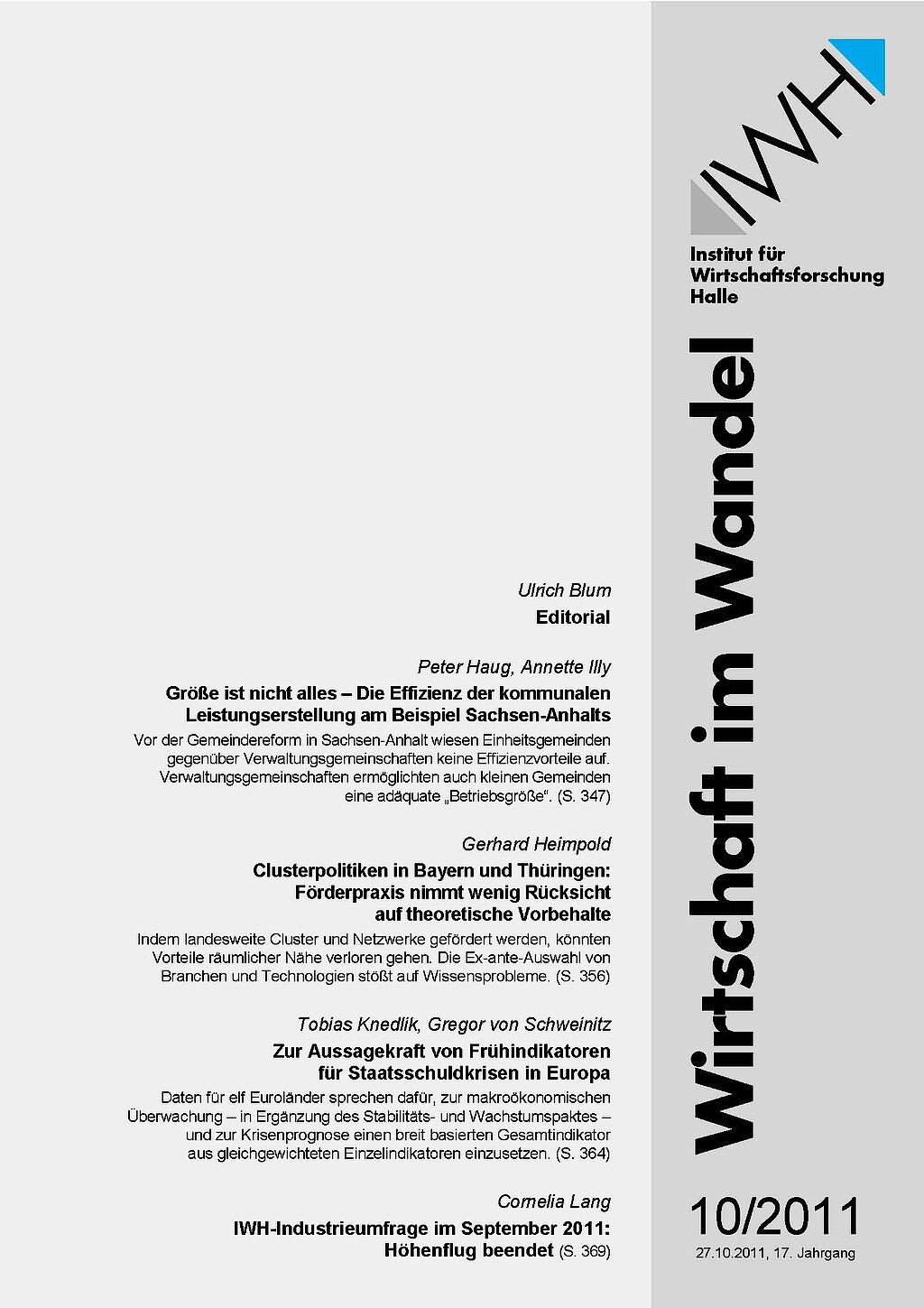
Size is not everything – The efficiency of municipal service provision in Saxony-Anhalt
Befürworter von Gemeindegebietsreformen – wie z.B. der erst kürzlich beendeten Reform in Sachsen-Anhalt – erwarten von Gemeindezusammenlegungen und zentralisierten Verwaltungsformen (Einheitsgemeinde statt Verwaltungsgemeinschaft) Kosteneinsparungen bzw. Effizienzsteigerungen bei der kommunalen Leistungserstellung. Der vorliegende Beitrag untersucht die möglichen Effizienznachteile kleinteiliger Gemeindestrukturen am Beispiel Sachsen-Anhalts zum Zeitpunkt vor der entscheidenden Phase der Gemeindegebietsreform. Die empirischen Ergebnisse zeigen, dass dezentrale Verwaltungsformen keinen signifikanten Effizienznachteil gegenüber Einheitsgemeinden aufweisen müssen. Ferner deuten die Analysen zur Skaleneffizienz darauf hin, dass die Mehrheit der sachsen-anhaltischen Gemeinden – wenn die aggregierte Ebene der Verwaltungsgemeinschaften betrachtet wird – eine weitgehend effiziente „Betriebsgröße“ hatte, wobei der Zusammenhang zwischen Einwohnerzahl und Skaleneffizienz u-förmig verläuft. Einerseits stützt die Untersuchung daher nicht den Erhalt von Kleinstgemeinden oder die Bildung von Verwaltungsgemeinschaften mit zweistelligen Mitgliedsgemeindezahlen. Andererseits liefern die Ergebnisse – selbst unter Berücksichtigung des sich abzeichnenden Bevölkerungsrückgangs – aber auch keinen Beleg für die Notwendigkeit der Reduzierung der Anzahl der Städte und Gemeinden in Sachsen-Anhalt von 1 118 im Jahr 2004 auf aktuell 219.




